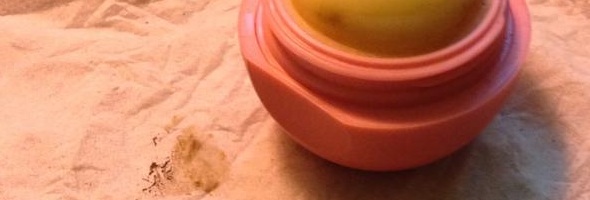
Claim: Eos brand lip balm can grow black or green mold under some conditions.
Example: [Collected via Twitter, January 2015]
Don't buy eos lip balm!! They grow mold!! The tissue shows mold from the lid, and you can see mold on the balm. #eos

Origins: Growing consumer demand for products labeled
number of cosmetic and personal grooming products are marketed in the same manner. One item that falls into the latter category is a
In January 2015, one such complaint about mold in eos lip balm involving black mold circulated widely online and created the impression similar issues with the product were recent or common. In response to the rumor's circulation, many eos lip balm users checked their own products and discovered they too possessed what looked to be contaminated product.
Complaints of mold in eos lip balm did not first appear in January 2015. A number of intermittent reports involving black or green mold either on the lid of the balm or the balm itself can be found on the Internet dating back at least as far as 2013. Eos users have reported finding rings of mold spots in the cap of the balm, or occasionally a spot of mold growing in the product itself. One Amazon reviewer complained:
I bought this at a local pharmacy about three months ago. After using it for several weeks I noticed a funny odor and black stuff around the edges. It had molded. Evidently the manufacturer is receiving complaints, and there is a buzz on the internet about this. Buyers please be aware.
One factor in the deluge of eos lip balm mold complaints was what appeared to be an increased focus on the issue. Users who spotted warnings about mold in lip balm more carefully scrutinized their own products, and those affected subsequently reported their own issues with moldy balm.
The product in question is marketed as primarily natural and organic, likely lacking preservatives commonly used to inhibit mold growth in similar lip treatments. On Facebook, eos replied to one user complaint and explained how to prevent mold from growing on lip balm:
Thank you for your email. We're so sorry to see that! We do very occasionally hear of this. Mold will grow on many surfaces, especially warm and moist places and on products with natural ingredients. The best way to prevent this is to try to not get the lip balm itself wet when applying it (apply to dry lips) and/or let any moisture that's on the lip balm dry before you put the top back on.
Eos advised consumers to send an
Last updated: 15 January 2016
